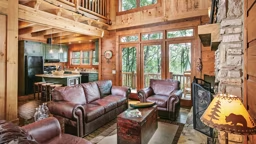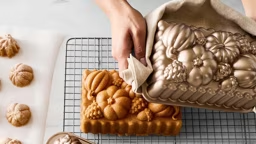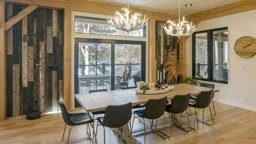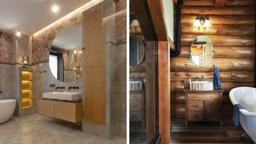

For interior designers like Kathleen Jennison, “aging in place” is an often-heard term that refers to people being able to live comfortably in their home as long as possible. “After all, you don’t want to outgrow your biggest investment,” she says. “With proper planning, you can begin to think of these modifications before they are needed.”
Here are Kathleen’s six important (and easy) design elements everyone should consider in a forever home, no matter the life-stage you’re in.
1. Motorized Window Treatments
Motorized window coverings can help make anyone’s life easier. With the touch of a button you can open or close your blinds, shades or drapes. This is important when you might have a hard time using cords or are unable to reach the window. Additionally, motorized window coverings add greater functionality by allowing you the ability to shut all the shades at one time or program them to open/close with the rising or setting sun, therefore cutting costs on energy bills.
2. Easily Operable Windows
Windows that open in the up/down direction are more difficult to use as mobility decreases. Turning a crank on a casement window is much simpler to operate, as is pushing a window to the side. When you’re considering installing new windows, look for models that either open inward/outward or slide back and forth.
3. Deep Base Cabinet Drawers
Most kitchens have a row of upper cabinets that are 12 inches deep and a row of base cabinets that are 24 inches deep. The lower cabinets often have one shallow drawer and two doors with shelves inside. This is difficult to access and a poor use of kitchen space.
Deep base cabinet drawers are perfect for storing dishes and pots/pans and they are easier to organize because you can see everything you have in them. This is especially important for those who can’t bend down to reach inside the cabinets to the back of their shelves.
4. Walk-in Showers
The advantages of walk-in showers are many. For anyone with mobility issues, stepping over the side of a bathtub into the shower is difficult — even impossible. This is an important consideration as you age, but also think about what happens if you or a family member break a leg now. With a walk-in, you’ll have a shower that’s accessible, whatever the reason.
Design-wise, walk-in showers are more flexible because you don’t have to divide your bathroom with a walled-in shower and curb. Additionally, it’s cleaner and allows for a more harmonious look because you can use the same floor tiles straight into the shower.
A grab bar is also helpful, as it allows for support and can be used to hang towels or washcloths. True, the thought of grab bars in your shower might not sound appealing, but keep in mind that functional design does NOT mean it can’t be beautiful as well.
5. Soft Flooring
Luxury vinyl planks (LVP) have a cork underlayment, a bamboo composite center and a vinyl top that mimics wood (seriously, you can’t tell the difference). The great thing about this type of flooring is that it’s soft.
Imagine falling on a ceramic tile floor as opposed to falling on softer vinyl floor. Injuries are likely to be less severe on a more forgiving surface. Also, standing on a hard surface can be painful, especially for those with brittle bones. LVP is much easier on your feet, joints, back and body overall.
6. Lever Door Handles
One of the simplest and highest returns on investment for increasing your home’s functionality is changing out your round doorknobs for levered handles. Round doorknobs are difficult for someone with arthritic hands to turn. Levered door handles require less grip and can even be opened with an elbow or hip.
With so many seniors wanting to stay in their homes rather than moving to assisted living facilities, there’s an ever-increasing need for accessible housing. Plan now, and be prepared to stay put!











